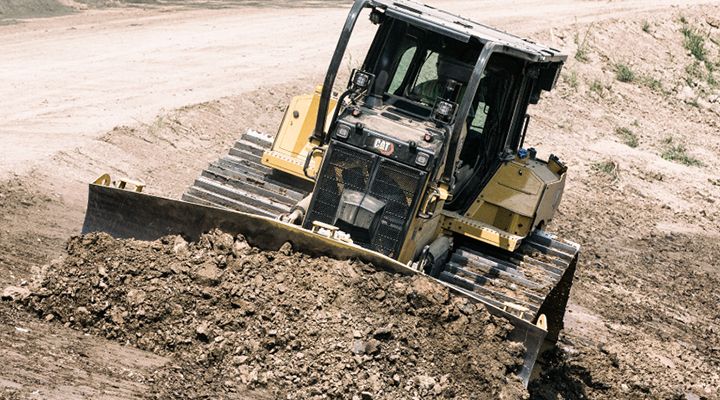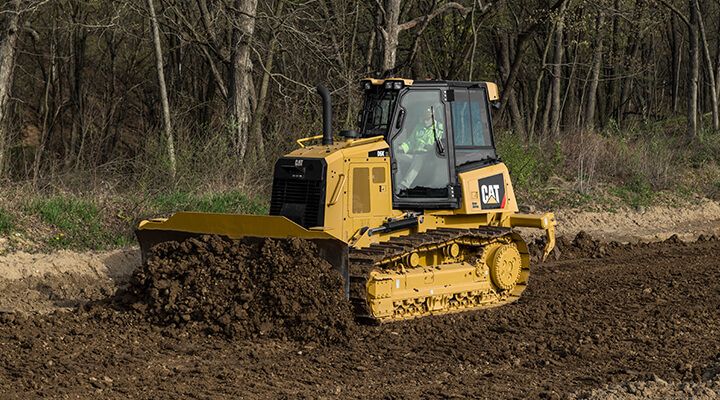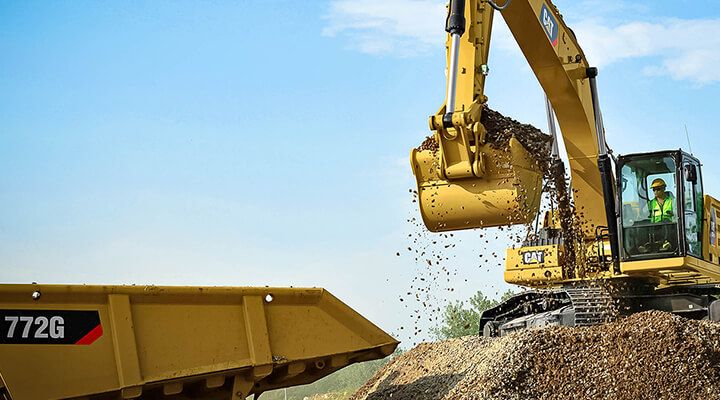

Sign In
Welcome! Sign In to personalize your Cat.com experience
If you already have an existing account with another Cat App, you can use the same account to sign in here
Register Now
One Account. All of Cat.
Your Caterpillar account is the single account you use to log in to select services and applications we offer. Shop for parts and machines online, manage your fleet, go mobile, and more.
Account Information
Site Settings
Security
Tech watch
HEAVY EQUIPMENT OPERATOR SHORTAGE AND REMOTE SOLUTIONS
As the equipment operator shortage continues, remotely controlled equipment offers a promising solution.
Dan Hellige, Cat worldwide marketing manager for Construction & Digital Technologies, is watching how remote systems can help attract a new generation of operators to the construction industry.
Estimated read time: 5 minutes
Telecommuting Comes To Construction
The construction industry is on the brink of a major revolution. While it once seemed far fetched to think that heavy equipment could be effectively operated over a long-distance data link, advances in remote control and autonomous technology have swung that door wide open.
Using systems such as the Cat® Universal Operator Station — a “virtual cab” that includes a comfortable seat, a full complement of controls, realistic tactile feedback and a multi-screen video feed — many types of construction machines can now be run from almost anywhere in the world.
The technology is thoroughly proven. An operator in Illinois can easily run a machine in Japan with no detectable control lag. It works so well that several companies have already put the system to use in the United States.
Long-distance remote control offers exciting new opportunities for construction companies. By enabling operators to work from anywhere, while spending their shift in a quiet, safe, comfortable environment, this technology stands to revolutionize operator hiring and retention across the industry.
“The technology is proven. An operator in Illinois can easily run a machine in Japan with no detectable control lag.”
Remote Equipment Operator Jobs
Think about the vast pool of potential operating talent that has already spent years (or decades) functioning within virtual environments. By their very nature, video games have honed essential skills for generations of smart, motivated people.
Those skills can be directly applied to remotely controlled equipment. The video game generation is used to manipulating objects and materials using virtual controls and online feedback. It’s a short leap to the immersive experience of a fully-equipped remote operator station.
Now, picture the very different work-day experience that a remote operator might have.
Instead of commuting to a jobsite that may be many miles from home (and that will move when the project is complete), our operators can go to a command center conveniently located in a nearby, populous area. In some cases, an operator station may even be placed in the employee’s own home, eliminating commuting time altogether.
A Day At The Command Center
Once on the job, there’s no need to gear up in layers of personal protective equipment (PPE), or even put on a coat in inclement weather. Operators won’t step onto a muddy, cold and potentially hazardous jobsite. They’ll walk into what amounts to an office environment — warm, quiet, well lit, with restrooms and amenities close at hand.
And instead of climbing on and off of large pieces of equipment (when the vast majority of lost-time injuries occur), our operators will take a floor-level seat in front of an array of video screens.
The remote video feed usually offers better views to the work area than are available from the cab of the machine. Once in motion, there’s no jarring motion, vibration or dust to contend with, and task automation features, such as grade control, help them deliver high-quality results.
At the end of their shift, tour operators go home clean, with little fatigue, ready to spend quality time away from work. As one remote operator put it, “Now I can shower before work instead of after.”
You can easily see how this experience can help to attract and retain quality operators.
Retaining Experienced Heavy Equipment Operators
One of the early adopters of long-distance remote control equipment, Louisiana’s Associated Terminals operates a number of barge terminals along the banks of the lower Mississippi River. The company lowers dozers, wheel loaders and excavators into the three-story deep holds of huge river barges to assist unloading operations.
Just getting on to each barge poses substantial dangers for operators. So the company instituted a “no-boots-on-the-barge” policy, aided by Cat Command remote control equipment. While the machines consolidate material in the holds, the operators work from a central office on shore.

Among the advantages of this arrangement, the operators don't have to drive between the various terminal locations, which stretch across 120 miles of river bank. They can easily and instantly switch between machines and locations to minimize operator downtime.
Another benefit, working remotely allows experienced operators to extend their careers. When one employee was put on light duty after a foot injury, he was able to resume working full shifts from his remote operator station.
This example demonstrates another way long-distance remote control can help alleviate the equipment operator shortage. Helping to retain existing operators reduces turnover, minimizes training costs and enables your company to leverage the invaluable experience of your best operators.
"Remote control technology will let
operators build engaging careers as
HEAVY EQUIPMENT SYSTEM MANAGERS.”
Safety, Cost & Retention Benefits
For Associated Terminals, and no doubt for many other potential customers, the primary benefit of remote controlled heavy equipment is safety. The fewer people you can have on a busy jobsite, the less chances there are for lost-time injury accidents.
There are costs benefits, too, in enabling operators to instantly switch between machines and locations during a single shift. With less operator downtime, you can use fewer people to accomplish the same amount of work.
Long-distance remote control pays dividends to the operators, as well. They can earn greater compensation as they take on responsibilities for multiple machines. And they can build engaging careers as Equipment System Managers. Instead of focusing on one job per shift, they can manage a number of jobs in various locations on different types of equipment.
As autonomous equipment becomes available, their management job will expand even more. While they remotely operate one machine, they can trigger autonomous missions for others — for example, starting a compactor on a self-guided route or setting an excavator going to autodig a basement.
All of these factors will contribute to turning construction equipment operation into a different kind of job than it’s been in the past. That, in turn, will attract a different kind of employee. Plus, it will help to keep them safe, healthy and engaged for a long and productive career.
RELATED STORIES
You’re here to get ideas to grow your business. Read on for machine insights and expert tips and tricks to get more out of every job.
-
Win More Work With Cat Grade Technology
It’s quickly reaching the point where you may not be competitive without grade control or technology.
Learn More -
Get Out In Front With Cat Grade Technology
Grade technologies automate or control machine functions that simplify and improve operations on a wide variety of construction machines.
Learn More -
Assistance Technology: Who Needs It?
Some manufacturers are introducing automated grading systems that don’t require a full investment in GPS infrastructure.
Learn More -
Grade Technology for Excavators
No matter what kind of work, chances are you can get the job done more efficiently if your excavator is equipped with grade control.
Learn More





